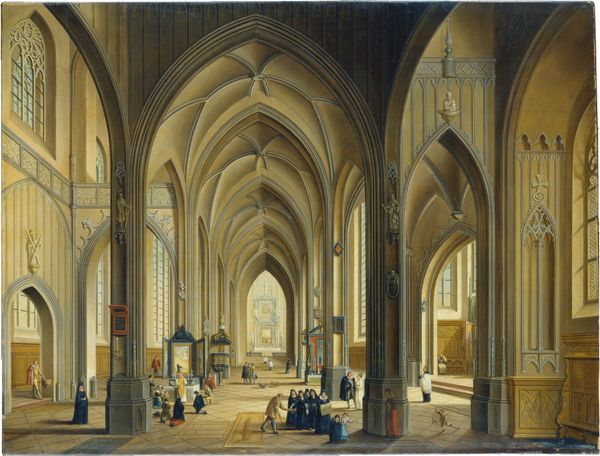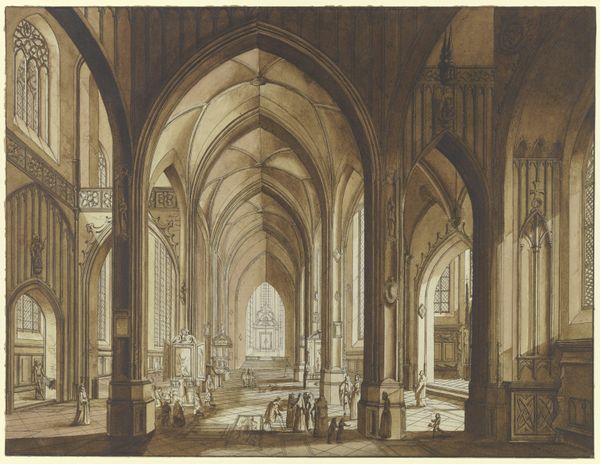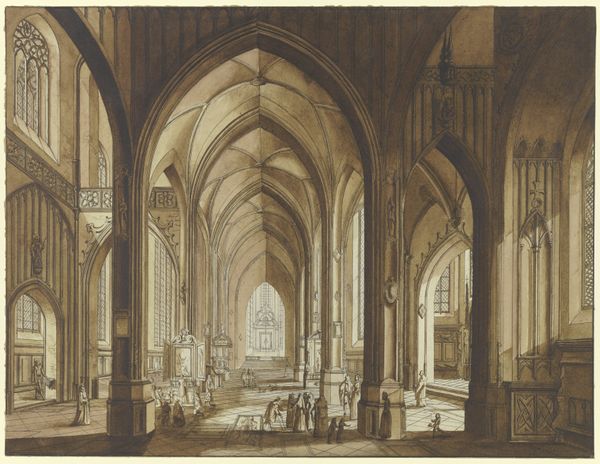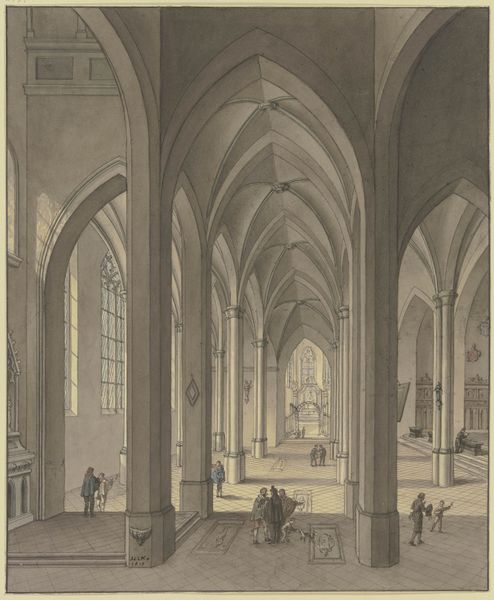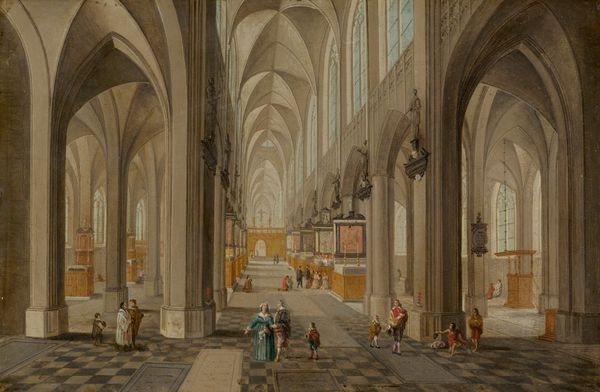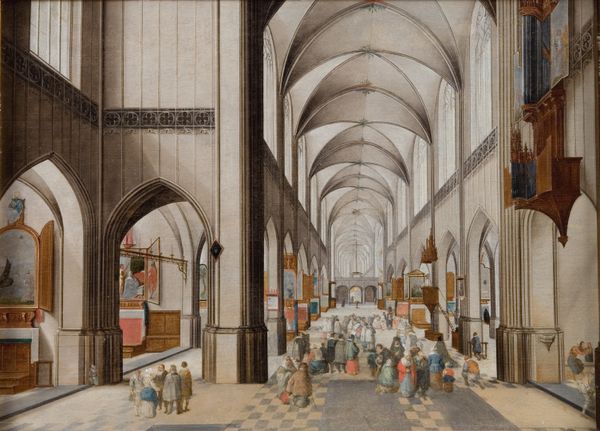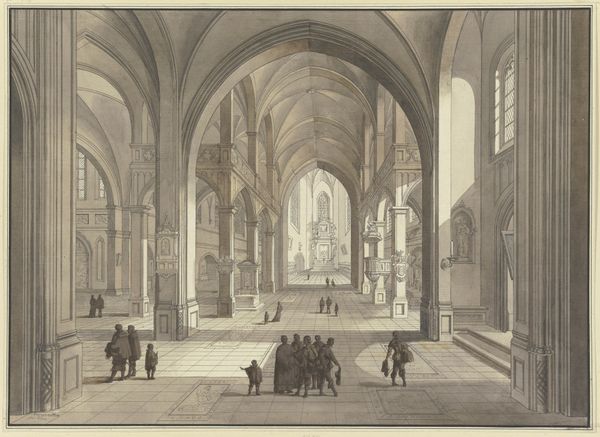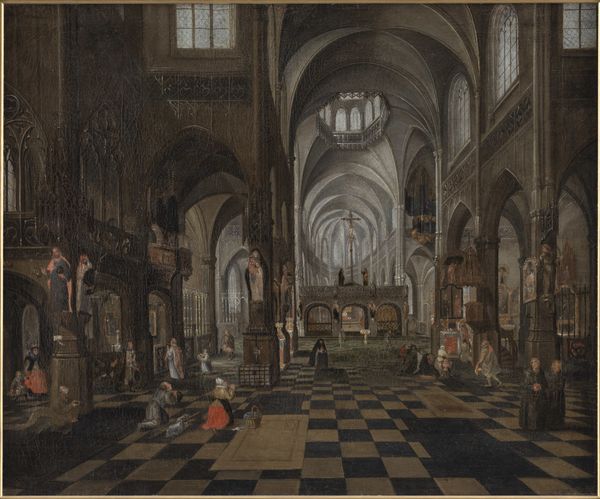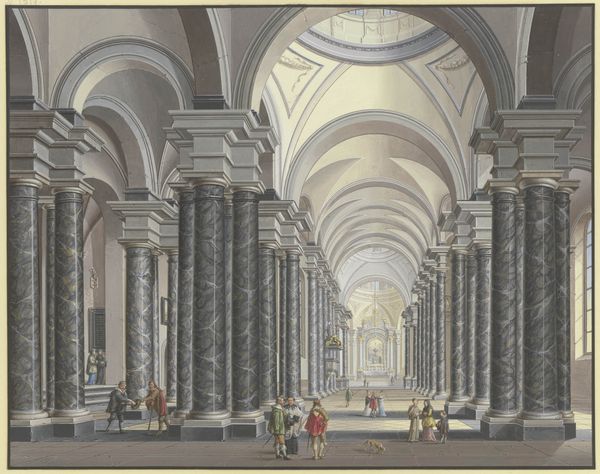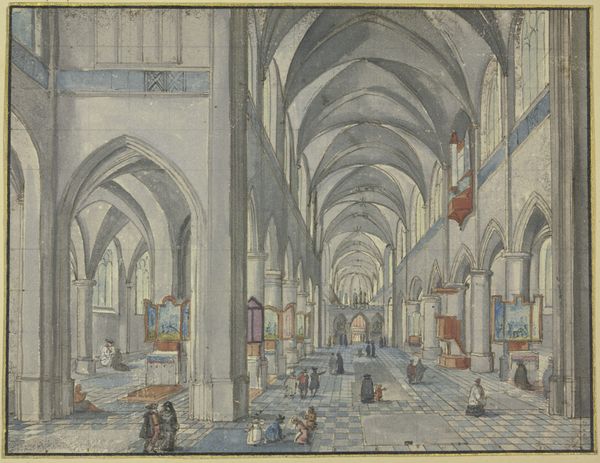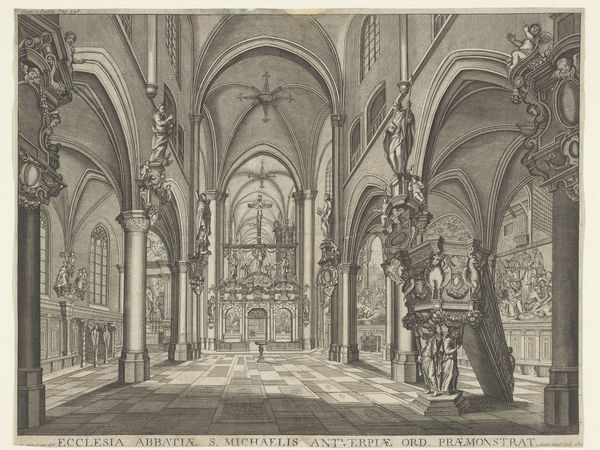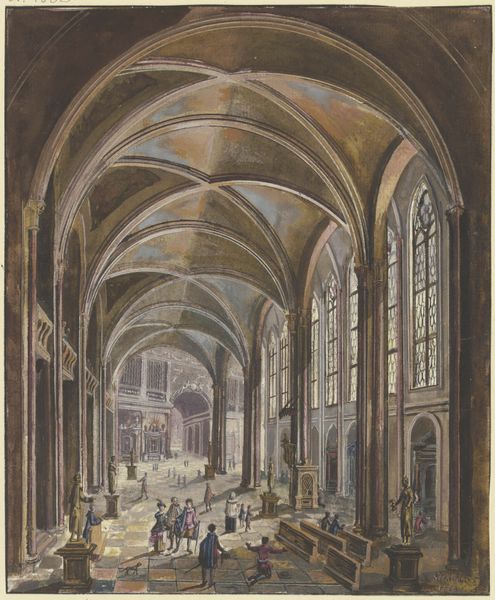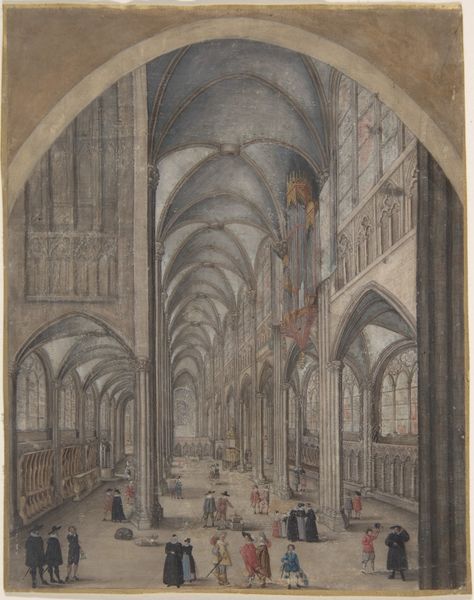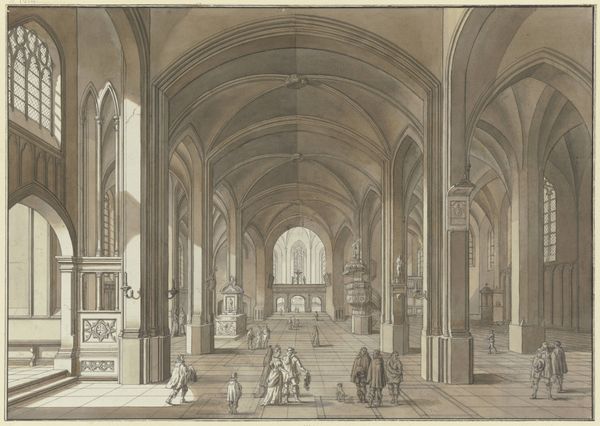
Blick in das Innere einer gotischen Hallenkirche mit vielen Staffagefiguren in der Tracht des 17. Jahrhunderts, links liest ein Priester die Messe 1790
0:00
0:00
Copyright: Public Domain
Curator: Here we have Johann Ludwig Ernst Morgenstern's "Blick in das Innere einer gotischen Hallenkirche mit vielen Staffagefiguren in der Tracht des 17. Jahrhunderts, links liest ein Priester die Messe," a drawing from 1790. You can find it here at the Städel Museum. Editor: What immediately strikes me is the sheer volume, the light swallowed by those soaring arches and seemingly endless columns. There’s a real stillness despite the busyness of the figures scattered below. Curator: Absolutely, there’s a sense of frozen grandeur, isn’t there? Look how he’s rendered the scene in such detail using paper. It captures a certain nostalgia for the gothic, but with the added element of 17th-century figures going about their day. I imagine this kind of elaborate interior would require scaffolding and many hands. Editor: And let’s think about the production of paper in the late 18th century. Rag paper was typical. All those linens, meticulously pulped, pressed. Then consider Morgenstern's choice of architecture. Cathedrals themselves were immense undertakings, often spanning generations of laborers, each adding to its aesthetic meaning. Curator: Right. And these aren’t just generic figures, are they? We're seeing figures depicted with 17th-century fashions that become integral to the artwork's commentary on daily rituals juxtaposed against the Gothic setting. I imagine these figures in such a context as almost miniature players, lost within a stage larger than themselves. Editor: You've touched on the concept of theater, I find it an important angle. Think about how space conditions social practices: how architectural decisions were not arbitrary, but deeply influenced by the clergy's or patrons' tastes. Curator: You know, what truly moves me is the sense of yearning it inspires. Morgenstern so perfectly uses perspective and line to evoke the Gothic past to invite me into this meticulously rendered church—not just as an observer, but as a participant. The artwork becomes a silent sanctuary where histories converse across centuries. Editor: A conversation indeed. But let us consider what elements drove the production of art like this: From materials like charcoal and graphite that shaped the fine details, all the way up to who decided what story these stones tell. I'm interested in understanding what and *who* are behind what you describe as emotional yearning. Curator: It is more intricate than I initially grasped as well. Thank you for unraveling it to give a peek into a realm far beyond what it suggests.
Comments
No comments
Be the first to comment and join the conversation on the ultimate creative platform.
